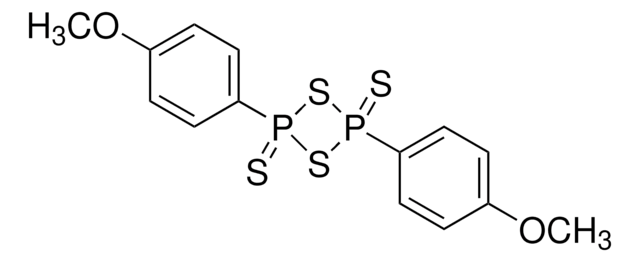M1021
1-Methyl-4-phenyl-1,2,3,6-tetrahydropyridine
Synonim(y):
MPTP
About This Item
Polecane produkty
kontrola substancji
regulated under CDSA - not available from Sigma-Aldrich Canada
tw
128-132 °C/12 mmHg (lit.)
ciąg SMILES
CN1CCC(=CC1)c2ccccc2
InChI
1S/C12H15N/c1-13-9-7-12(8-10-13)11-5-3-2-4-6-11/h2-7H,8-10H2,1H3
Klucz InChI
PLRACCBDVIHHLZ-UHFFFAOYSA-N
Szukasz podobnych produktów? Odwiedź Przewodnik dotyczący porównywania produktów
Działania biochem./fizjol.
Ostrzeżenie
Hasło ostrzegawcze
Danger
Zwroty wskazujące rodzaj zagrożenia
Zwroty wskazujące środki ostrożności
Klasyfikacja zagrożeń
Acute Tox. 3 Oral - STOT SE 1
Kod klasy składowania
6.1A - Combustible acute toxic Cat. 1 and 2 / very toxic hazardous materials
Klasa zagrożenia wodnego (WGK)
WGK 3
Temperatura zapłonu (°F)
235.4 °F - closed cup
Temperatura zapłonu (°C)
113 °C - closed cup
Certyfikaty analizy (CoA)
Poszukaj Certyfikaty analizy (CoA), wpisując numer partii/serii produktów. Numery serii i partii można znaleźć na etykiecie produktu po słowach „seria” lub „partia”.
Masz już ten produkt?
Dokumenty związane z niedawno zakupionymi produktami zostały zamieszczone w Bibliotece dokumentów.
Nasz zespół naukowców ma doświadczenie we wszystkich obszarach badań, w tym w naukach przyrodniczych, materiałoznawstwie, syntezie chemicznej, chromatografii, analityce i wielu innych dziedzinach.
Skontaktuj się z zespołem ds. pomocy technicznej









